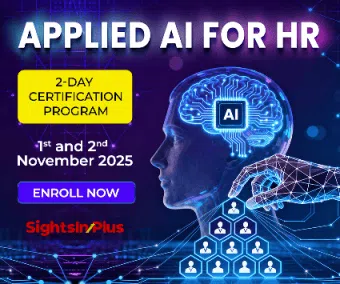Every professional hits that point when enthusiasm dips, learning slows, and the next career step seems out of reach. This is the career plateau—a silent but powerful force shaping employee engagement and retention.
As HR professionals, we’ve all seen it: talented employees delivering steadily but quietly disengaging because growth feels distant. Left unaddressed, plateaus can breed frustration, lower productivity, and even attrition. But when managed with empathy and foresight, they can become powerful turning points.
Let’s discuss: What exactly is a career plateau?
It may stem from organizational structures, skill gaps, or simply a lack of passion.
Case in Point: A mid-level manager had mastered her responsibilities and built strong networks. But with senior roles locked for years, she began feeling “stuck.” The issue wasn’t performance; it was opportunity.
Why It Matters for HR?
A plateau is not just an individual problem; it’s an organizational challenge. Employees who feel trapped may withdraw emotionally, impacting morale and team culture. On the flip side, HR’s interventions—coaching, mobility programs, upskilling—can turn these moments into launchpads.
“Behind every ‘stuck’ employee is untapped potential waiting for the right nudge.”
Breaking Through: Strategies That Work
1. Re-Skilling & Continuous Learning
Encourage employees to align with emerging skills. Plateaus often disappear when knowledge expands.
Example: An accounts manager, sensing automation reducing his role, pursued analytics training. HR sponsored his certification, enabling him to shift into a strategic finance analytics role. As HR we should Offer curated learning pathways, e-learning credits, and reward employees who invest in upskilling.
2. Encouraging Lateral Growth
Not all growth is vertical. Lateral moves offer fresh challenges, new networks, and broader skillsets.
Example: A marketing professional plateaued in brand campaigns moved into internal communications. The lateral shift gave her renewed energy and later positioned her for leadership. So, we should, Build transparent internal job boards and normalize lateral moves as valuable growth steps.
3. Mentorship & Coaching
Mentors help employees discover blind spots and reimagine their career paths.
Example: An HR generalist plateaued in her role found direction through mentorship. With guidance, she specialized in employee experience and soon led an engagement project. As HR we our responsibility to Formalize mentorship programs pairing mid-career talent with senior leaders.
4. Purpose and Meaning
Sometimes, employees don’t need new roles; they need renewed purpose.
HR’s initiative reignited their sense of mission. Regularly showcase impact stories, linking employee work to organizational purpose.
5. Empathetic Career Conversations
Managers play a crucial role. With HR’s support, they can hold meaningful conversations to reignite growth.
Example: A senior engineer confided he felt invisible. HR coached his manager to engage differently. Soon, he was leading a stretch project that revived his motivation. As HR, we have to plan training – Train managers in coaching, feedback, and empathetic listening.
The Human Touch: More Than Policies – This is most important
Career plateaus are deeply personal. Employees want to feel seen and valued, not just “managed.”
HR’s greatest contribution lies in blending structure with empathy—listening, guiding, and creating an environment where employees rediscover energy and direction.
“Sometimes, empathy is the first breakthrough.”
Closing Thoughts /Conclusion
Career plateaus are not career dead-ends. They are pauses that invite reflection and reinvention. For employees, the key lies in staying curious and adaptable. For organizations, the responsibility is to provide pathways—through learning, mobility, mentorship, and meaning.
As HR leaders, we are uniquely positioned to turn plateaus into turning points. With the right mix of strategy and human touch, we can transform stagnation into momentum—unlocking potential not just for individuals, but for the organization as a whole.
Note: We are also on WhatsApp, LinkedIn, and YouTube to get the latest news updates. Subscribe to our Channels. WhatsApp– Click Here, YouTube – Click Here, and LinkedIn– Click Here.



